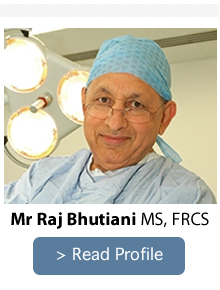THE OPERATION OF REMOVING GALL BLADDER (CHOLECYSTECTOPMY)
The operation is done under General anaesthesia.
In my experience almost 98% of the gall bladders can be removed through keyhole (Laparoscopic) surgery, by making 3-4 small cuts in the right side of the belly. Unfortunately it is not always possible to say which patient is going to be one of the 98% and which one is one of the 2% (in whom the operation has to be converted into the conventional open type involving a cut just under the right rib cage), until the surgeon has put the camera into the belly and has looked around the structures that need to be dissected during the procedure.
In majority of patients, the patient can leave hospital on the same day or the next day,
POSSIBLE COMPLICATIONS:
- Complications with gall bladder surgery are uncommon.
- Like with any operation there is slight risk of bleeding, leakage of bile and infection.
- As there are a number of structures around the area of dissection, such as Bile Ducts, Small bowel and liver. There is a very minimal risk of accidental damage to these structures, which may necessitate need for further surgery. But I must stress that complications are extremely uncommon.
AFTER THE OPERATION:
The operation usually lasts 45minutes to an hour. You are usually fully recovered from the anaesthesia in less than an hour. The pain is very minimal if at all in the first 5 hours as the local anaesthetic is infiltrated into the cuts. Soon after that painkillers are given to prevent further pain. You should be able to at and drink once you have recovered from the anaesthetic. You are able to go home the same evening or the next morning.
I normally advise patients to take it easy for a week and not drive for a fortnight, after which you are back to your normal life.
I use dissolvable sutures on the inside of the skin and the scars fade away with time although they never disappear.
Nearly 10-20% of the patients have some diarrhoea, because of the bile draining directly into the small intestine rather than being stored in the gall bladder and only released when fatty food is eaten. This usually settles down in a very short period and is helped by high fibres diet.



